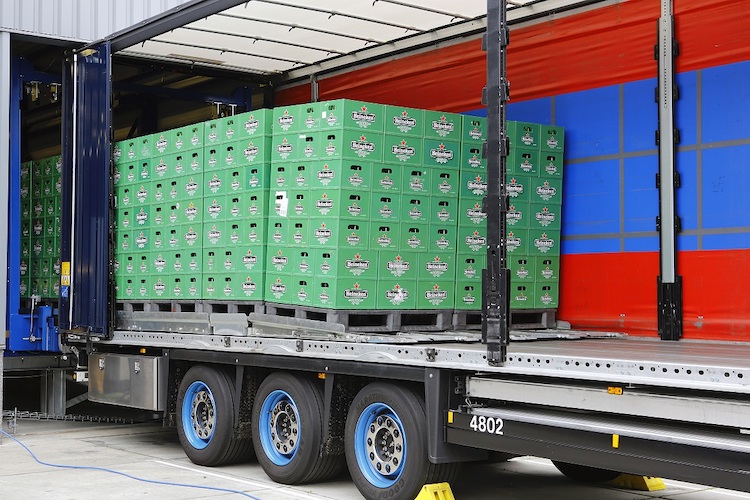The Benefits of Automatic Truck Loading Systems: Reduce loading and unloading times to a few minutes
By Jack Smylie, North America sales manager, Ancra Systems
As 3PLs (third-party logistics) companies, distribution centers, and warehouses all get ready for the all-important holiday picking, packing, and shipping season there is a fundamental flaw in how space utilization is conceived.
Most warehouse managers are sure if they had double the number of loading and unloading bays, their operation would be twice as efficient. Nothing could be further from the truth. The efficiency of truck unloading and loading occurs when that process is automated.
Fully automatic loading and unloading always require two combined systems: one system in the truck or trailer and a fixed installation on the loading platform or in the warehouse. Truck loading conveyors and other automated solutions allow increased efficiency.
By adding elevators, lift platforms, turntables, and conveyors which interface with the automatic loading and unloading systems the rate of truck turns increases dramatically.
Automatic truck (un)loading systems, also known as ATLS moves product from standard systems to customized solutions.
Geared to industry sector applications and uniquely calculated to meet logistic requirements, streamlining trailer loading and unloading processes worldwide captures the core lean manufacturing principle of eliminating waste (time, resources, and labor).
The most commonly used truck loading and unloading systems are for shuttle services between production facilities and distribution centers.
Truck loading and unloading times are reduced from half an hour to a matter of minutes.
Return-on-investment times are short due to the immediate savings compared to the traditional method of using forklifts or hand pallets/trucks.
Labor savings are immediately realized with ATLS solutions since fewer logistics personnel are required thanks to the automation of the loading and unloading process. Fewer forklifts and associated training, maintenance, and repair costs drive another cost-savings.
Fewer loading and unloading docks are required because each dock can handle higher volumes. The time trucks are loaded and unloaded is significantly reduced; previously contemplated distribution center or warehouse expansion becomes unnecessary.
The high price of warehouse space and full capacity occupancy rates translates into a paradigm shift where the current number of docks is more than adequate once an ATLS system is implemented.
Cost-savings are realized as fewer trucks, trailers, and drivers are required due to increased fleet utilization. Less warehouse space is needed due to more concentrated flow of goods.
Less buffer stock is needed, allowing for JIT (Just-in-Time) inventory, due to quicker inbound and outbound transportation of goods. Similarly, there is less space outside needed with the quicker turnaround times of trailers.
Reduced damage of goods and equipment due to controlled loading and unloading is a quantifiable benefit as well as creating a safer working environment for personnel, which generates employee satisfaction and retention.

There are different types of ATLS solutions. One of the most popular is the Skateloader system (pictured above).
The Skateloader system was developed and engineered for the automated loading of non-modified trailers. When no trailer modifications are required, the Skateloader is the ultimate solution for one-shot loading of standard pallets for outbound transport.
The loading process takes approximately 6-8 minutes (depending on the required height adjustment and alignment).
The Skateloader has two special functionalities for loading. It is equipped with a scanning system controlled by dedicated software to ensure the correct alignment of the loading system with the trailer.
It is able to follow the trailer’s height which changes continuously due to the air suspension, thus ensuring a flawless loading process. The system deposits the pallets on the floor of the trailer in a controlled way, without any friction to the pallets and its cargo.
The Skateloader can be seamlessly integrated into any automated production or warehouse system. The Skateloader system increases efficiency by 400 percent, compared to traditional forklift truck loading. The shorter truck turnaround time at the dock is accomplished while creating a safer work environment, for employees and product.

About the author: Jack Smylie is the North America Sales Manager at Ancra Systems. Ancra Systems supplies material handling systems for automatic truck loading and unloading and the connection to new or existing internal transport conveyors. Leading clients include DHL, Toyota, Bavaria, Federal Express, Procter & Gamble, and Friesland Foods.
Jack has many years of material handling and industrial packaging experience in multiple industries, both domestically and internationally. Jack studied Marketing at Kent State University and has been a guest speaker at multiple trade shows, university seminars, and radio programs. Jack can be reached at (908) 297-2731 or j.smylie@ancrasystems.com.
